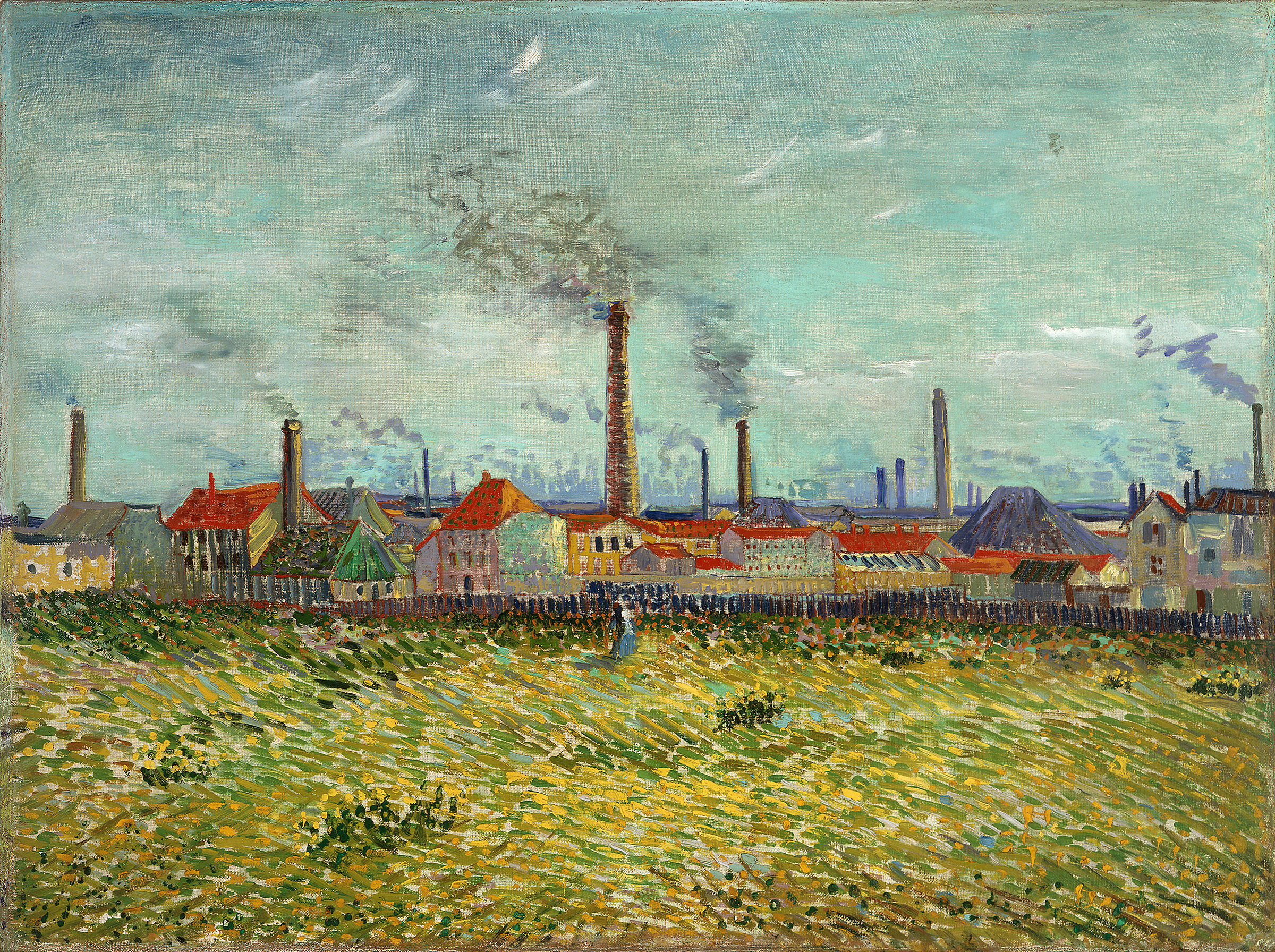
What follows is an excerpt from a recent conversation between David Ebony and Michael Lobel. David is a writer, critic, and curator; Michael is a professor of art history at Hunter College and the Graduate Center, CUNY, and is the author of the new book Van Gogh and the End of Nature. It complicates the view of Vincent van Gogh as the consummate nature painter, offering instead an artist whose images are inseparable from the modern industrial era in which he lived and worked. You can read the full interview on the Yale University Press blog.
David Ebony: You organize the book so nicely, with chapter headings: Air, Earth, Fire, Water, and Color. You start out with the topic of air — hence the smokestacks and the theme of air pollution. You say that the smoky emissions from the smokestacks and the trains hold as much interest for Van Gogh as the clouds. Art audiences who love those clouds, like all of us, do tend to ignore those smokestack plumes. You also talk about other innovations and inventions of the period, like nationally synchronized clocks to facilitate train schedules, and how important that was for Van Gogh.
Michael Lobel: I think once we start placing Van Gogh back within that historical context, we realize all sorts of new things about him, his world, and his work. In the first chapter, I write about Joseph Roulin, an important person for Van Gogh in Arles in 1888, who is usually referred to as the postman Roulin. Van Gogh befriends Roulin and his family and paints their portraits. But he was not a conventional letter carrier. He represented the railway, in that he worked for the railway post. He signals the importance of the railroad in Van Gogh’s world.
David Ebony: In the chapter on fire, you talk about Van Gogh’s relationship with illumination, which is also a serious source of pollution. He complained that there were not enough gas lamps in Arles.
Michael Lobel: It was evident to me that there was more to be said about Van Gogh’s interest in gaslight; and gaslight was again a revolutionary introduction for the 19th century. It was powered by coal gas, so again, we’re back to the use of fossil fuels. I just wanted people to understand that when you look at a picture like “The Starry Night”, which is obviously one of his most iconic works, it is not just about natural light sources, but rather the relationship between artificial and natural forms of illumination.
Reproduced with permission. Read the full interview.
For more information about the book, visit yalebooks.yale.edu.





